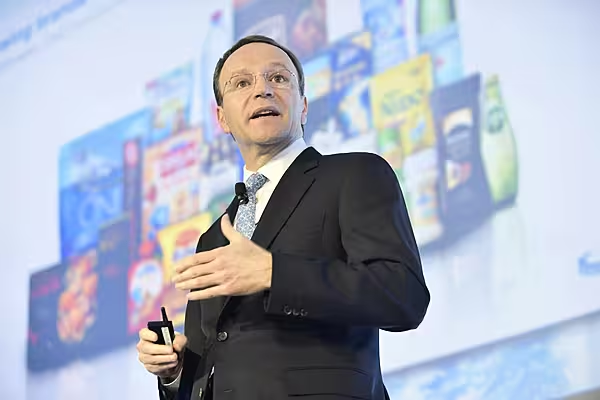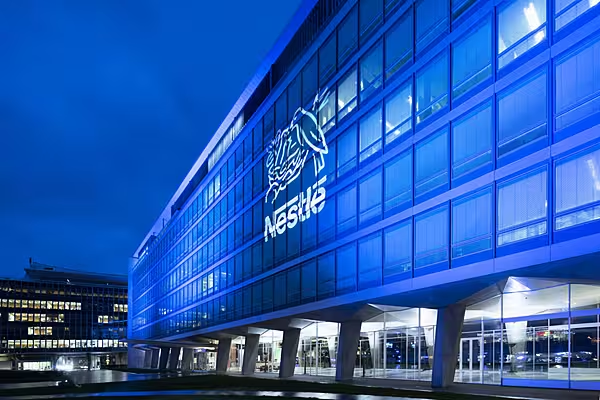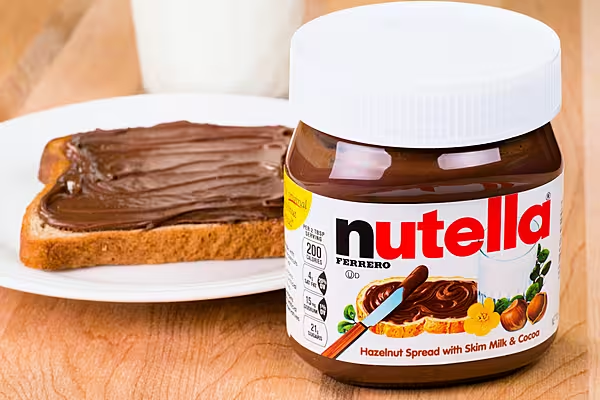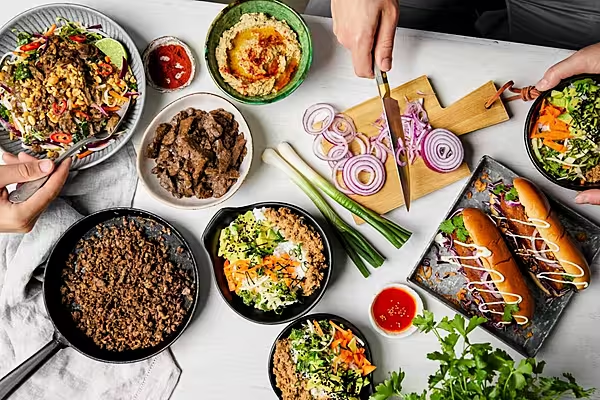As Mark Schneider took the stage at London’s Corinthia Hotel for his first big strategy update, seated at the back of the ballroom was Dan Loeb, the activist investor who has spent the last three months goading the Nestlé SA chief executive officer to seek profits over scale.
Schneider took a step toward meeting the hedge-fund chief’s demands, setting the Swiss food company’s first fixed profitability goal as it focuses on key businesses like coffee, pet care and bottled water, rather than growth for growth’s sake, but Nestlé stopped short of a wholesale embrace of Loeb’s agenda, vowing to keep its stake in French cosmetics giant L’Oréal SA.
Under Pressure
The adoption of a profit target comes amid a broader shift among the world’s biggest food companies. With many mass-market brands facing scepticism from consumers seeking healthier and hipper alternatives, consumer-goods giants are under pressure from investors to cut costs and to move into more profitable niches.
“We’ll need to trade out of some product areas and into others,” Schneider said at the seminar. “We’ll act decisively.”
Selective acquisitions and divestments could affect about 10% of total revenue, Schneider told investors as he unveiled his new strategy to them at a conference in London. Nestlé, which has about 90 billion francs in sales, aims to focus on faster-growing businesses such as coffee, bottled water and pet care, as the company tries to sell its US chocolate business in its first major retreat from sugary snacks.
Company Targets
“The target is certainly attainable,” said Jean-Philippe Bertschy, an analyst at Bank Vontobel AG. “While it will please some investors, others, like Loeb, may be a bit disappointed.”
Nestlé’s adoption of a profit target marks a broad shift among the world’s biggest food companies after decades of prioritising scale. The CEO already announced a share buy-back worth as much as 20 billion francs ($21 billion), the planned disposal of Nestlé’s US confectionery unit, and acquisitions of coffee and fresh-food businesses. The company has also been cutting jobs at its skincare unit.
Schneider said that Nestlé isn’t immediately changing its stance on its stake in French cosmetics maker L’Oréal, which he described as a “fabulous” investment, contributing 9% of the Swiss company’s earnings per share over the past decade. The death of L’Oréal heiress Liliane Bettencourt last week prompted speculation about the future of Nestlé’s 23% holding in the French cosmetics company.
Gerber, Yinlu
Nestlé plans to keep its US frozen unit, and the ailing skin-health business has a strategic fit, according to the CEO. He also said that the company is trying to revamp its Gerber baby-nutrition division in the US and Yinlu food in China.
Nestlé has faced calls for a shake-up from Third Point, whose stake is equal to about 1%, while rival Unilever fended off a takeover bid earlier this year from Kraft Heinz, backed by buyout firm 3G Capital Partners.
Unilever is targeting an underlying operating margin of 20% by 2020, while Danone aims to exceed 16% that year. That compares with Nestlé’s new goal for an underlying trading margin of 17.5% to 18.5% by 2020.
Last year, Nestlé announced plans to improve its margin by at least two percentage points by 2019 or 2020 through cost savings. The Nescafé-maker’s unadjusted trading operating margin has hovered between 15% and 15.3% during the past six years.
In July, Schneider said that Nestlé may expand restructuring beyond its original plan. The company, which had 328,000 employees in 2016, has forecast that reorganisation costs will rise about 67%, to 500 million francs, this year.
“Virtually all of you underestimate the will to win at this company,” Schneider said. “It’s hell-bent on not losing its leadership position.”
News by Bloomberg, edited by ESM. Click subscribe to sign up to ESM: The European Supermarket Magazine.














